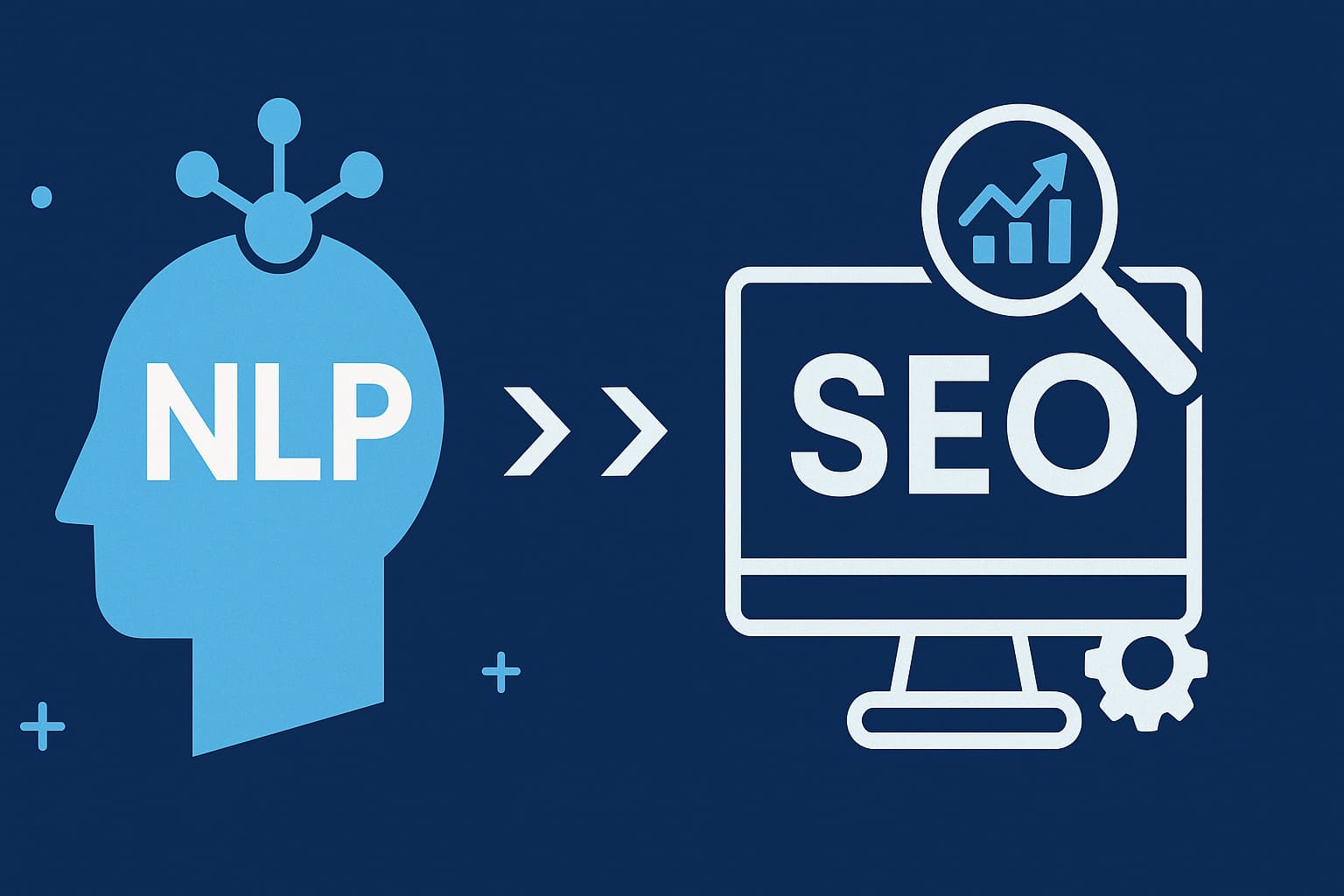In the ever-evolving world of SEO, staying ahead of the curve is crucial for businesses looking to maintain their online presence and drive traffic to their websites. With new technologies and search engine algorithms constantly changing, it’s important to stay updated on the latest trends in SEO. So, what can we expect in 2023?
Search engine optimization (SEO) is an essential aspect of digital marketing. It involves optimizing websites and content to rank higher on search engine results pages (SERPs). As the online landscape continues to evolve, so does the field of SEO. Keeping up with the latest trends and strategies is essential for businesses to remain competitive.
As we approach 2023, there are several SEO trends that are expected to shape the digital marketing landscape. These trends will influence how businesses optimize their websites and content to improve their visibility and reach a wider audience. By staying ahead of these trends, businesses can ensure that they continue to drive organic traffic and stay ahead of their competitors.
1. First-hand experience on a topic (the new “E” in EEAT)
When it comes to providing valuable and engaging content, there is no substitute for first-hand experience. In the world of SEO, this concept has gained significant importance and has been dubbed as the new “E” in EEAT – Expertise, Authoritativeness, Trustworthiness.
In the past, content creators could rely on research and secondary sources to deliver information to their audience. However, with search engines like Google emphasizing user satisfaction and relevance, first-hand experience has become a key factor in determining the quality and credibility of content.
When a content creator has personal experience on a topic, they bring a unique perspective that no amount of research can replicate. Whether it’s reviewing a product, sharing travel experiences, or offering advice in a specific field, first-hand experience gives credibility and authenticity to the content.
But how does first-hand experience impact SEO? Firstly, it helps to establish expertise. When a content creator has direct experience or knowledge in a particular subject, it signals to search engines that the content is created by someone knowledgeable and reliable. This can positively impact search rankings and increase organic traffic.
Secondly, first-hand experience enhances authoritativeness. By providing firsthand accounts, insights, and examples, content creators can position themselves as authorities in their niche. This not only builds trust with the audience but also gives search engines the confidence to rank their content higher.
Lastly, first-hand experience contributes to the overall trustworthiness of the content. When readers know that the information they are consuming is based on real experiences, they are more likely to trust and engage with the content. This can lead to increased time on site, lower bounce rates, and higher conversions.
So, how can content creators leverage first-hand experience in their SEO strategies? It starts with identifying areas where personal experience can add value to the content. Whether it’s sharing personal stories, providing insights, or offering practical tips, incorporating first-hand experience can make the content more relatable and engaging.
Additionally, content creators should prioritize showcasing their expertise and credibility through their content. This can be done by sharing personal anecdotes, including case studies, or citing specific examples from their own experiences. This not only adds depth to the content but also differentiates it from generic, research-based articles.

2. Satisfying, helpful content
One of the top SEO trends for 2023 is the emphasis on satisfying and helpful content. In an era where user experience is paramount, search engines like Google are increasingly prioritizing content that provides real value to users. Gone are the days of keyword-stuffed, shallow articles that provide little to no substance.
Satisfying, helpful content is all about meeting the needs and expectations of the audience. It goes beyond just providing information – it aims to solve problems, answer questions, and offer actionable advice. This type of content is designed to genuinely help users and leave them feeling satisfied with their search results.
So, what makes content satisfying and helpful? Firstly, it needs to address the user’s intent. By understanding what users are looking for when they type in a search query, content creators can tailor their articles to provide relevant and valuable information. This means conducting thorough keyword research and analyzing search intent to ensure that the content aligns with what users are seeking.
Moreover, satisfying, helpful content goes beyond the basic requirements. It goes the extra mile by offering unique insights, providing practical tips, and presenting information in a comprehensive and easily digestible manner. This could involve incorporating visuals, infographics, or videos to enhance the user experience and make the content more engaging.
Another important aspect of satisfying, helpful content is ensuring that it is up to date and relevant. With the ever-evolving landscape of industries and topics, it’s crucial for content creators to continuously update their articles to reflect the latest trends, information, and best practices. This not only demonstrates credibility but also ensures that users are getting the most accurate and useful content possible.
Addressing user intent and providing valuable information, satisfying, helpful content should also take into consideration the user experience. This includes optimizing for mobile devices, ensuring fast loading times, and implementing user-friendly navigation. By creating content that is accessible and easy to consume, content creators can further enhance the overall user experience and increase engagement.
3. Changes to CTRs by SERP positions
Changes to click-through rates (CTRs) by search engine results page (SERP) positions have been a significant trend in SEO in recent years. As search engine algorithms become more sophisticated, the way users interact with search results is evolving. Understanding these changes can help content creators and digital marketers make strategic decisions to improve their search rankings and increase organic traffic.
Traditionally, the top position in the SERPs received the highest CTR, followed by a gradual decline as you move down the page. However, recent studies have shown a shift in user behavior, with clicks being distributed more evenly across different positions. This means that securing the number one spot is no longer the sole focus for driving traffic. Instead, content creators need to optimize their pages to attract clicks from various positions in the SERPs.
One of the factors contributing to this change is the emergence of featured snippets. These concise, informative snippets that appear at the top of the search results provide users with immediate answers to their queries. As a result, they often attract a significant portion of clicks, even if they are not in the top position. Content creators should strive to optimize their content to appear in featured snippets and capture user attention.
Another important consideration is the rise of mobile searches. With the increasing use of smartphones, search engine giants like Google have prioritized mobile-friendly content and improved the mobile user experience. As a result, the CTR distribution across SERP positions may differ on mobile devices compared to desktops. It is crucial for content creators to optimize their websites and content for mobile devices to maximize their chances of attracting clicks.
Furthermore, changes to search engine algorithms have shifted the focus towards user intent. Search engines aim to provide the most relevant and helpful content based on the user’s query. Understanding user intent and aligning content with it can increase the chances of attracting clicks, regardless of the SERP position. Content creators should conduct thorough keyword research and create content that directly addresses the user’s intent.
It’s also worth noting that the presence of ads and other elements in the SERPs can impact CTRs. Users’ attention may be divided among various elements, influencing which positions receive the most clicks. Content creators should keep an eye on any changes to the SERP layout and adapt their strategies accordingly.
4. Image SEO revitalized
As the online landscape continues to evolve, so does the importance of image SEO. Images have the power to capture attention and enhance the visual appeal of a webpage, making them an integral part of any content marketing strategy. However, simply adding images to your website is no longer enough to drive traffic and improve search engine rankings.
In 2023, image SEO will experience a revitalization as search engines become more sophisticated in understanding and ranking visual content. Here are 11 trends to watch out for:
1. Image optimization for mobile devices: With the majority of internet users accessing websites through mobile devices, optimizing images for mobile is crucial. This includes reducing file sizes, using responsive designs, and ensuring fast loading times.
2. Captions and alt text: Search engines rely on captions and alt text to understand the context and relevance of images. Using descriptive and keyword-rich captions and alt text can boost your image’s visibility in search results.
3. Structured data for images: By implementing structured data markup specifically for images, you can provide search engines with additional information about the image content. This can improve visibility in image-specific search results and enhance the overall user experience.
4. Image sitemaps: Including images in your sitemap helps search engines discover and index them more efficiently. With properly formatted image sitemaps, you can ensure that search engines understand the importance and relevance of your images.
5. Image compression: Large image file sizes can slow down page loading times, negatively impacting user experience and SEO. Compressing images without compromising quality is essential to maintain fast loading speeds and prevent high bounce rates.
6. Image format optimization: Choosing the right image format can significantly impact page loading times. WebP and JPEG 2000 formats, for example, offer better compression while maintaining image quality.
7. Image file naming: Instead of generic names like “img123.jpg,” use descriptive file names that include relevant keywords. This helps search engines understand the content of the image and improves discoverability.
8. Image relevance: Search engines prioritize relevant content, and images are no exception. Ensure that your images align with your overall content and provide value to users.
9. Image context: Placing images in appropriate context within your content helps search engines and users understand their purpose and relevance. This can be achieved through captions, surrounding text, and the overall structure of your webpage.
10. Image engagement: User engagement signals, such as click-through rates and time spent on the page, are increasingly important for search engine rankings. Engaging images that capture attention and encourage users to explore further can boost these signals.

5. Fast-loading, high-performing websites
In 2023, website performance will continue to be a crucial factor in search engine optimization (SEO) and user experience. Fast-loading, high-performing websites not only contribute to better rankings on search engine result pages but also provide a positive browsing experience for users. Here are some key considerations for achieving a fast-loading website in the upcoming year:
1. Page speed optimization: High loading speeds are essential for reducing bounce rates and improving user satisfaction. Website owners should focus on optimizing various aspects of their website, including optimizing code, compressing images, and minimizing the number of HTTP requests.
2. Mobile optimization: With mobile searches continuing to dominate, it’s important to prioritize mobile optimization. Mobile-friendly websites that load quickly on smartphones and tablets will see improved rankings, especially with the introduction of Google’s mobile-first indexing.
3. Lazy loading: Lazy loading is a technique that delays the loading of non-critical elements, such as images or videos, until the user scrolls down the page. Implementing lazy loading can significantly improve initial page load times and overall website performance.
4. Minimizing redirects: Excessive redirects can slow down a website’s loading time. It is crucial to review and minimize the number of redirects on your website to ensure a smooth and speedy user experience.
5. Content delivery network (CDN): Utilizing a CDN can improve website performance by caching static content and delivering it from servers geographically closer to the user. This reduces the distance data has to travel and improves loading times.
6. Server response time optimization: Server response time affects how quickly a website starts rendering for users. Optimizing server response time by using efficient server configurations, reducing database queries, and using caching mechanisms can significantly improve website performance.
7. Minifying CSS and JavaScript: Minifying CSS and JavaScript files involves removing unnecessary whitespace, comments, and code, which can help reduce file sizes and improve loading times.
8. Browser caching: Leveraging browser caching allows repeat visitors to load your website more quickly since their browser can store static elements, such as CSS files and images, for faster access.
9. Content optimization: Optimizing the content on your website involves structuring it in a way that enhances readability and user experience. By organizing content into easily scannable paragraphs, using relevant header tags, and incorporating bullet points, you can improve page load times and overall engagement.
10. Keeping plugins and scripts to a minimum: Excessive plugins and scripts can add unnecessary weight and slow down website performance. Regularly assess and remove any unnecessary or outdated plugins and scripts to maintain optimal loading speeds.
6. Visual search will become more popular
Visual search is one of the latest trends in the world of SEO, and it is expected to become even more popular in 2023. As technology advances, users are finding it easier to search for information using images rather than text. With visual search, users can simply take a photo or upload an image to find relevant search results.
Visual search offers a more interactive and personalized search experience, allowing users to find exactly what they are looking for. It eliminates the need for extensive keyword searches and provides instant results based on images.
This trend is particularly relevant for e-commerce businesses. Users can take a photo of a product they like and easily find similar products online. This opens up opportunities for businesses to engage with potential customers and provide them with relevant product information.
To optimize for visual search, businesses should focus on optimizing their visual content. This includes using high-quality images, adding descriptive alt text and captions, and optimizing image file names. By doing so, businesses can increase their chances of appearing in visual search results.
As visual search continues to gain popularity, businesses need to adapt their SEO strategies to include visual content. By embracing this trend and optimizing their visual assets, businesses can improve their online presence and stay ahead of the competition.
7. Topic Clusters
With the ever-evolving landscape of search engine optimization (SEO), it’s important for businesses to stay up to date with the latest trends. One of the emerging trends in SEO that is gaining traction is the use of topic clusters.
Topic clusters are a way for businesses to organize their content around a central pillar topic. Instead of creating individual pieces of content for each keyword, topic clusters aim to create a comprehensive resource center that covers all aspects of a specific topic. This approach not only helps businesses establish their authority on a particular subject but also improves their search engine rankings.
The concept behind topic clusters is rooted in the idea of semantic search, which focuses on understanding user intent rather than relying solely on keyword matching. By organizing content into clusters, businesses can provide a more holistic and valuable experience for their audience. This is because topic clusters help search engines understand the relationship between different pieces of content, making it easier for them to serve relevant results to users.
To create effective topic clusters, businesses should start by identifying a pillar topic that is relevant to their industry or target audience. This central topic should be broad and encompass a range of subtopics. From there, businesses can create individual pieces of content that delve deeper into each subtopic while linking back to the central pillar topic.
By interlinking content within the topic cluster, businesses signal to search engines that these pieces are related and should be considered as a comprehensive resource. This not only helps improve search rankings for the pillar topic but also drives traffic and engagement to the individual pieces of content within the cluster.
When implementing topic clusters, businesses should keep in mind the core principles of SEO. This includes conducting thorough keyword research to identify relevant search terms and incorporating them naturally into the content. It’s also crucial to prioritize creating high-quality, informative, and valuable content that meets the needs of the target audience.

8. Content Localization
Content localization is a powerful strategy that businesses can implement to reach a global audience and improve their search engine optimization efforts. With the rise of the internet and the increasing interconnectedness of the world, it has become essential for companies to tailor their content to specific regions, languages, and cultures.
One of the key benefits of content localization is its ability to increase user experience and engagement. When businesses provide content in the native language of their target audience, it creates a more personalized and relatable experience. This, in turn, leads to higher engagement, longer time spent on the website, and lower bounce rates. By speaking directly to their potential customers in their language, businesses can establish trust and build stronger relationships with their international audience.
Content localization also helps businesses tap into untapped markets and gain a competitive edge. With the increasing number of internet users in non-English speaking regions, businesses that invest in content localization have the opportunity to stand out from competitors who are solely focused on English-based content. By providing content that resonates with local users, businesses can capture a larger share of the market and establish themselves as trusted authorities within specific regions.
While content localization offers immense potential for businesses, it’s important to approach it strategically. This involves understanding the target market’s preferences, cultural nuances, and search behaviors. Keyword research specific to each region is crucial to ensure that the localized content is optimized for relevant search terms. Additionally, businesses should consider adapting not only the language but also the visuals, currencies, measurements, and any other cultural attributes that may differ from their primary market.
9. Rich Snippets
Rich snippets are a game-changer in the world of SEO and are set to become an even more important SEO trend in 2023. A rich snippet is a brief summary or preview of a webpage’s content that appears in search engine results. It provides users with valuable information at a glance, giving them a deeper understanding of what a webpage offers before even clicking on it.
There are various types of rich snippets, including reviews, ratings, recipes, events, products, and more. What makes rich snippets so powerful is their ability to attract attention and increase click-through rates. By displaying additional information, such as star ratings, pricing, availability, or a short description, they make search results more visually appealing and informative. This enhances the user experience and drives more targeted traffic to websites.
The importance of rich snippets lies not only in improving user engagement but also in boosting search engine rankings. When search engines like Google display rich snippets in their results, it signals that a webpage provides valuable and relevant information. This can lead to higher search rankings and increased visibility, ultimately attracting more organic traffic.
To optimize your content for rich snippets, there are a few key factors to consider. First and foremost, structured data markup is essential. By adding structured data to your website’s HTML code, you provide search engines with specific information about your content, making it easier for them to generate rich snippets.
Choosing the right schema markup for your content is also crucial. Schema.org provides a comprehensive list of schemas that you can use to mark up different types of content. For example, if you have a recipe page, you can use the Recipe schema to provide details such as preparation time, ingredients, and nutrition facts.
It’s also worth noting that mobile optimization plays a significant role in obtaining and displaying rich snippets. With the rise of mobile searches, search engines prioritize mobile-friendly websites that provide a seamless user experience across different devices. Ensuring that your website is mobile-responsive and loads quickly is vital for both user satisfaction and search engine rankings.
10. Rise of the featured snippet
The rise of the featured snippet is one of the top SEO trends to watch in 2023. Featured snippets are concise, direct answers that appear at the top of search engine results pages, providing users with quick information without having to click through to a website. This prominent position has made featured snippets highly coveted by content creators and website owners.
Why are featured snippets important? Well, they not only provide valuable information to users but also significantly impact search engine rankings. When your content is selected to be featured in a snippet, it signals to search engines that your website is a reliable source of information. This can result in higher search rankings and increased visibility.
To optimize your content for featured snippets, there are a few strategies to consider. First, understand the types of questions or queries your target audience is asking and create content that directly answers them. Research popular search terms related to your industry and identify opportunities to provide clear and concise answers.
Next, structure your content in a way that is easily scannable by search engines. Use headings, bullet points, and numbered lists to break down information and make it easier for search engines to pull relevant snippets. Additionally, make sure your content is comprehensive and covers the topic in-depth, as snippets often provide more value when they come from detailed and authoritative sources.
It’s also beneficial to optimize your content for voice searches. As voice assistants like Siri and Alexa become more popular, optimizing your content to answer conversational queries can increase your chances of being featured as a voice snippet.
The rise of featured snippets presents both opportunities and challenges for content creators. While being featured can greatly increase your visibility and drive more traffic to your website, it also means users may get the information they need without clicking through to your site. However, by providing valuable and engaging content, you can position yourself as an industry expert and entice users to explore further.

11. AI-generated images get popular
AI-generated images are gaining popularity in the world of SEO. As technology continues to advance, AI algorithms are becoming more sophisticated and capable of creating realistic and high-quality images. This opens up a whole new realm of possibilities for content creators and marketers.
One of the main benefits of using AI-generated images is the ability to create unique and customized visuals. Instead of relying on stock photos or hiring a professional photographer, AI can generate images that match your brand’s style and tone. This allows you to stand out from the competition and create a cohesive visual identity across your website and other digital platforms.
However, it’s important to note that AI-generated images should be used ethically and responsibly. While AI can generate stunning visuals, it’s still crucial to ensure that the images align with your content and accurately represent your brand. Additionally, it’s essential to strike a balance between AI-generated images and genuine human creativity to maintain authenticity and connect with your audience on a deeper level.
12. Core Web Vitals
In the ever-evolving world of SEO, staying on top of the latest trends and updates is essential. One trend that is gaining significant attention in the SEO community is Core Web Vitals. These vital metrics are set to become an integral part of Google’s algorithm in 2021, and it’s crucial for businesses to understand and optimize for them.
So, what exactly are Core Web Vitals? Simply put, they are a set of user-centered metrics that measure essential aspects of the user experience on a website. These metrics include loading time, interactivity, and visual stability. Google considers these factors important in determining the overall quality and performance of a website.
Loading time refers to how quickly a webpage loads, and it has a direct impact on user satisfaction. Studies have shown that users tend to leave a website if it takes too long to load. With the rise of mobile searches and the need for instant information, optimizing loading time has become more critical than ever.
Interactivity, also known as Time to Interactive (TTI), measures how long it takes for a webpage to become responsive to user input. This metric is crucial because users expect a seamless and responsive experience when interacting with a website. If a webpage appears sluggish and unresponsive, it can lead to frustration and increased bounce rates.
Visual stability, or Cumulative Layout Shift (CLS), measures the frequency and extent of unexpected layout shifts while a page is loading. It refers to elements on a webpage moving unexpectedly, causing users to misinterpret or click on the wrong elements. Visual stability is essential for providing a smooth and comfortable browsing experience, as users don’t want to lose their place or accidentally trigger unwanted actions.
Optimizing for Core Web Vitals is not only beneficial for improving user experience but also for search engine rankings. Google has made it clear that websites that provide a positive user experience will be rewarded with higher visibility in search results. By focusing on improving loading time, interactivity, and visual stability, businesses can enhance their chances of achieving better organic search rankings.
To optimize for Core Web Vitals, businesses can take several steps. This includes optimizing images and file sizes to improve loading time, minimizing render-blocking resources, and implementing lazy loading of images and videos. Prioritizing mobile optimization is also crucial, as mobile searches continue to dominate. Additionally, regularly monitoring and analyzing Core Web Vitals data is essential to identify areas for improvement.
13. Focus on User Intent Optimization
User intent optimization is a crucial aspect of SEO strategy that businesses should focus on in 2023. User intent refers to the specific goal or purpose behind a user’s search query. By understanding and aligning with the user’s intent, businesses can create content that satisfies their needs and provides a valuable and relevant experience.
Search engines like Google have become increasingly adept at understanding user intent and delivering search results that match user expectations. This means that businesses need to go beyond simply targeting keywords and instead focus on delivering content that answers the user’s query in the most relevant and helpful way.
To optimize for user intent, businesses should start by conducting keyword research to identify the search terms and phrases that align with their target audience’s needs and desires. This involves understanding the intent behind each keyword and determining whether it is transactional, informational, or navigational.
Transactional keywords indicate that the user is ready to make a purchase or engage in a specific action, such as “buy now” or “sign up for a free trial.” Informational keywords imply that the user is seeking information or answers to their questions, such as “how to” or “why is.” Navigational keywords suggest that the user is looking for a specific website or brand, such as “YouTube” or “Nike.”
Once businesses have identified the different types of keywords and their corresponding user intent, they can create content that directly addresses these intents. For informational queries, businesses can create detailed and informative blog posts or articles that answer common questions. For transactional queries, businesses can create landing pages or product pages that offer a clear call-to-action and emphasize the benefits of their offerings.
By focusing on user intent optimization, businesses can increase their chances of attracting potential customers who are actively searching for the products or services they offer. This not only improves the user experience but also enhances the likelihood of conversion and ultimately drives business growth.
14. Emphasis on Technical SEO
In addition to user intent optimization, another important SEO trend to watch out for in 2023 is the increased emphasis on technical SEO. While content quality and relevance have always held significance in search engine rankings, the technical aspect of a website’s SEO can no longer be ignored.
Technical SEO refers to the optimization of a website’s infrastructure, crawlability, and overall performance. It involves ensuring that search engines can easily access and understand your website, making it easier for them to index and rank your content.
One key aspect of technical SEO is optimizing website loading speed. With the rise in mobile searches and users expecting instant results, slow-loading websites are more likely to experience high bounce rates and lose potential customers. To tackle this issue, website owners need to prioritize optimizing the loading time by compressing images, minifying CSS and JavaScript files, and using lazy loading techniques.
Another essential element of technical SEO is mobile optimization. As more people use their smartphones and tablets to search and browse the internet, websites must be responsive and seamlessly adapt to different screen sizes. Additionally, search engines now prioritize mobile-friendly websites and penalize those that are not optimized, making it crucial for businesses to ensure their website is mobile-responsive.
Furthermore, technical SEO involves optimizing website architecture and navigation. Clear and logical site structure not only helps search engines understand your content better but also provides a user-friendly experience. Organizing your website into distinct categories and using internal linking can improve user navigation and increase the likelihood of visitors staying on your site longer.
Lastly, website security is an integral part of technical SEO. With cyber threats on the rise, search engines prioritize secure websites by boosting their rankings. Employing HTTPS encryption, regularly updating software, and protecting against malware are crucial steps in ensuring a secure online presence.
Get Help from SEO Experts
In today’s fast-paced digital world, having a strong online presence is crucial for businesses to thrive. Search Engine Optimization (SEO) plays a vital role in improving a website’s visibility and driving organic traffic. However, SEO can be complex and time-consuming, requiring expertise and constant adaptation to evolving trends.
SEO experts are professionals who specialize in optimizing websites to rank higher in search engine results. With their in-depth knowledge and experience, they help businesses stay ahead of the competition and attract a steady stream of relevant traffic.
One of the main benefits of hiring an SEO expert is their ability to develop a tailored SEO strategy. They thoroughly analyze your website, target audience, competitors, and industry trends to create a comprehensive plan that aligns with your business goals. This strategy includes keyword research, on-page optimization, content creation, link building, and technical improvements, all aimed at increasing your website’s visibility and driving targeted traffic.
Moreover, SEO experts constantly stay updated with the latest SEO trends and algorithm changes. Search engines like Google frequently update their algorithms, and these changes can significantly impact a website’s ranking. SEO experts are aware of these updates and employ strategies to ensure your website stays in line with the search engine guidelines. They monitor analytics, conduct audits, and make data-driven decisions to continuously optimize your website for better performance.
How to stay ahead of the curve in SEO?
In the competitive world of digital marketing, staying ahead of the curve in SEO is essential for businesses to maintain their online visibility and attract valuable traffic. As search engines continuously evolve and introduce new algorithms and ranking factors, it is crucial to adapt and implement the latest SEO strategies. Here are some tips to help you stay ahead of the curve in SEO:
1. Stay updated with SEO trends: SEO is a rapidly evolving field, and staying up-to-date with the latest trends is key to staying ahead. Regularly follow industry blogs, subscribe to reputable SEO newsletters, and participate in SEO forums to stay informed about the latest algorithm updates, new ranking factors, and SEO best practices.
2. Conduct thorough keyword research: Keywords are the foundation of any successful SEO strategy. Continuously research and analyze relevant keywords, including long-tail keywords and those related to user intent. Utilize keyword research tools to identify high-ranking and low-competition keywords that can help improve your website’s visibility.
3. Focus on user experience (UX): Search engines prioritize websites that provide a positive user experience. Optimize your website’s loading speed, create mobile-friendly designs, improve site navigation, and ensure that your content is easy to read and understand. Engage your audience with visually appealing and interactive elements such as videos, infographics, and images.
4. Create high-quality and valuable content: Content is king in SEO. Develop a content strategy that focuses on providing valuable and relevant content to your target audience. Publish original, well-researched, and authoritative content that answers users’ queries and solves their problems. Incorporate detailed information, statistics, and external sources to establish your expertise and credibility.
5. Build high-quality backlinks: Backlinks from reputable and relevant websites can significantly impact your website’s search rankings. Conduct link building activities such as guest blogging, influencer collaborations, and outreach campaigns to acquire quality backlinks. Focus on building relationships and offering valuable content to other webmasters in exchange for a backlink.
6. Leverage the power of social media: Social media platforms play a crucial role in SEO. Engage with your audience on platforms like Facebook, Twitter, LinkedIn, and Instagram. Share your content, participate in relevant discussions, and encourage user-generated content. Social signals, such as likes, shares, and comments, can boost your website’s visibility in search engine results.
7. Monitor and analyze your SEO performance: Regularly track and analyze your website’s SEO performance using analytics tools. Monitor organic traffic, keyword rankings, bounce rates, conversion rates, and other key metrics to gain insights into the effectiveness of your SEO efforts. Make data-driven decisions and continually refine your SEO strategies based on the analysis.
Staying ahead of the curve in SEO requires continuous learning, adaptation, and implementation of the latest techniques and strategies. By staying updated, prioritizing user experience, creating valuable content, building high-quality backlinks, leveraging social media, and monitoring performance, you can ensure that your website remains competitive and visible in search engine rankings.
Conclusion
In conclusion, keeping up with the latest SEO trends and techniques is essential for success in the digital marketing landscape. As we look ahead to 2023, certain strategies will continue to play a vital role in optimizing websites and improving search engine rankings.






